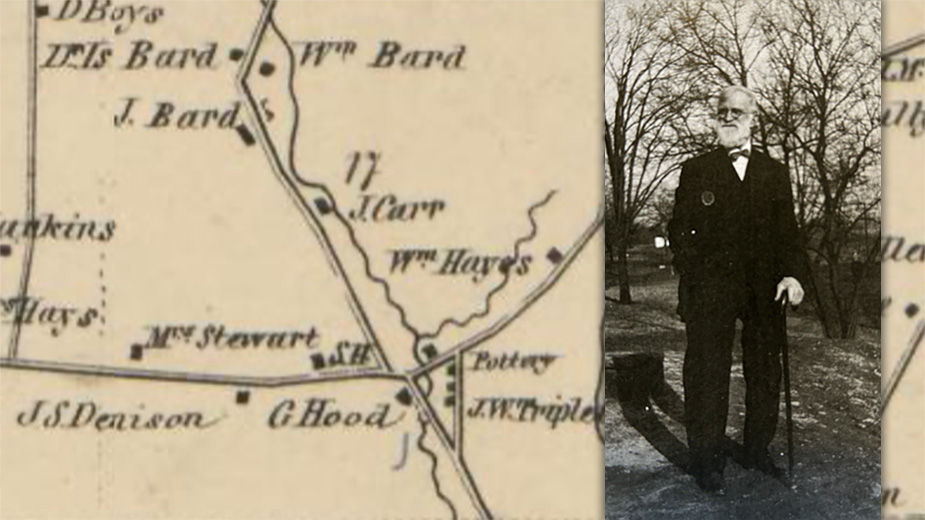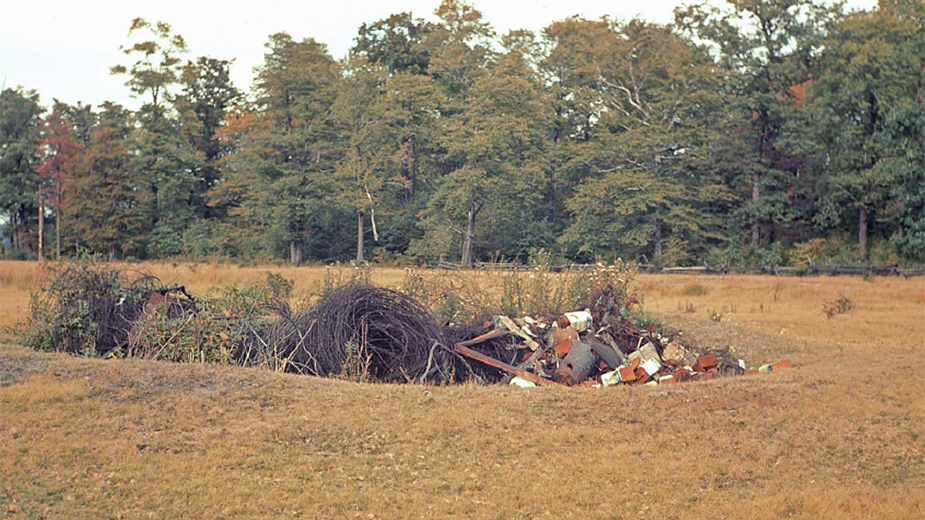Journey to the Center of the World
LEAVITTSBURG – For decades, the two signs that bookend a 0.7-mile stretch of state Route 5 in Braceville Township have steadily commanded the attention of motorists.
Passersby on the busy thoroughfare often take note of the small, unassuming placards from the northeast- and southwest-bound lanes that hold just four words: “Center of the World.” It’s enough to convince drivers to stop, turn around, and take another look.
“There are people from all over who stop and take pictures with it,” says Jeff Tucker, a Braceville Township trustee. “It’s kind of a cool thing.”
Indeed, the signs have become a bit of a roadside attraction, Tucker notes. “You see a lot of people taking selfies,” he says.
So, why would a nondescript, unincorporated portion of Trumbull County that holds just a handful of businesses and residences have bragging rights to the moniker “Center of the World”?
The answer lies in the mid-19th century, as Ohio transitioned from its frontier status to a state with influential commercial, industrial and political value.
By the 1840s, this section of Braceville proved an inviting place to set up business. A stagecoach line that ran from Pittsburgh to Akron angled along what is today Route 5, a path that hugged portions of the Mahoning River and ran parallel to the Pennsylvania and Ohio Canal. The potential of commercial success held promise.
Settlers had already staked their claims here along the Mahoning River as early as the first years of the 19th century. Indeed, an abandoned, dilapidated brick house along Route 5 – records from the Trumbull County Auditor’s office show that the earliest construction dates to 1810, during the presidency of James Madison – is the sole structure from the era that remains standing.
“This used to be an old wagon route,” says Daniel Tingler, manager at Leeworthy’s Auto Body, located in the heart of Center of the World. Tingler, 58, has lived in the vicinity his entire life and has worked at the body shop since he was 13. He’s gained most of his knowledge of the area from “old-timers” who often stopped in to chat and have coffee.
Tingler relates that many of these elderly residents told him that the vacant 19th century house was once used as a stop and inn along the wagon route.
“That was a place where people could come in, feed and water their horses, get something to eat, before they would travel on farther,” he says. “That’s what the old, oldtimers told me. How true it is, I don’t know.”
Tingler says he’s also heard from generations of customers that this section of state Route 5 was always considered Center of the World because of its early business activity, spurred by the stagecoach line and the nearby canal.
Tingler is partially correct. While there was steady commercial bustle in this part of Braceville during the first half of the 19th century, it was the arrival of a risk-taking merchant and speculator during the mid-1840s that finally provided the name whose legacy has endured.
Randall Wilmot was born in Woodbridge, Conn., in 1792. According to the late Fred Blue, a former history professor at Youngstown State University and author of “No Taint of Compromise: Crusaders in Antislavery Politics,” Wilmot moved to the Catskill Mountains region of New York, where he married his first wife. He and his wife then relocated to Wayne County, Pa., eventually settling in Bethany, a small village northeast of Scranton. There, Wilmot bought and sold various pieces of property. In 1814, the Wilmots gave birth to a son, David. David Wilmot would study law and eventually represent Pennsylvania in the U.S. House of Representatives and the U.S. Senate.
In 1827, Randall Wilmot was able to build a magnificent mansion on Wayne Street in Bethany that still stands. For reasons unknown, Wilmot sold the house and an adjoining store five years later and purchased land in Dimock, in Susquehanna County in northeastern Pennsylvania. According to David Wilmot’s biographer, Charles Buxton Going, he sold those assets in 1836 “and was again on the move toward the near west.”
By the early 1830s, David Wilmot’s professional career as an attorney was on the rise, while his father’s business affairs remained precarious at best. According to Going, the younger Wilmot had on at least two occasions during the 1830s successfully bailed his father out as creditors closed in.
Wilmot then decided to take his chances in Ohio. In 1841, it’s believed that Wilmot kept a tavern in Russell, a small community in Geauga County. According to the “History of Geauga and Lake Counties, Ohio,” Randall Wilmot “had been a man of substance, and when in Russell was depressed in circumstances.”
It’s unclear where Wilmot moved next, but circa 1845, he seized upon an opportunity in Braceville. There, at what is now the corner of state Route 5 and state Route 82, the ever-persistent Wilmot opened a new store and inn along the Pittsburgh-Akron stagecoach route. He named it “Center of the World,” an extension of an earlier venture in New York he named “Beginning of the World.”

The name stuck.
Janice Kistler, president of the Braceville Historical Society, says the spot where Wilmot ran his business stood at the base of a covered bridge that spanned the Mahoning River. “It had a hay loft where people could store their feed,” she says.
According to Joseph Butler’s “History of Youngstown and the Mahoning Valley,” Wilmot did a “thriving business as a merchant and innkeeper.” But this good fortune lasted only as long as the stagecoach line remained vibrant. The stage route and canal traffic dried up as railroads emerged as the preferred means of travel. The epicenter of the railroad in Trumbull County nested in nearby Warren, with a station in Leavittsburg and other junctions, bypassing Center of the World.
Seeing that business was likely to suffer, Wilmot relocated to what was in 1856 called Leroy – today Cortland – in Bazetta Township. According to an 1856 map of Trumbull County, the name “Wilmot” appears as a landholder along a meandering creek that bisects the town. Here, he opened another establishment, appropriately called “End of the World.”
Meanwhile, his son David Wilmot had already attained a great deal of success in politics and the legal profession. In 1844, Wilmot, then a Democrat, was elected to the U.S. House of Representatives from the 12th District in Pennsylvania. In 1846, Wilmot introduced the “Wilmot Proviso,” a proposal attached to a spending bill that would ban slavery from the western territories that the U.S. would acquire in the aftermath of the Mexican-American War. While it passed the House, the Senate introduced a revised bill without the Wilmot amendment. The House ultimately reconciled and the proviso was removed. The proviso nonetheless exposed the deep political divisions over slavery that would culminate in the Civil War.
David Wilmot later became an active member of the Free Soil Party, served as an appellate judge in the 13th District, and would eventually be elected to the Senate as a Republican.

Wilmot died at age 84 in 1876 in Cortland, where he is buried.
Those who still live in Center of the World reflect on its history and the attention it receives to this day.
“It was named after an old general store and it kind of stuck,” says Gary Hendrick, who has lived in Center of the World along state Route 5 for 45 years. “You see people all the time stopping to take pictures at that sign,” he says, gesturing to the small road sign, now flying an American flag.
Previously, the township had erected larger, more colorful signs that advertised Center of the World along the route. It turns out that those, too, became local cultural icons in high demand.
“They quit putting those signs up,” Hendricks laughs. “Everybody started stealing them.”
Pictured at top: Travelers along state Route 5 in Braceville Township often are surprised to find themselves in the Center of the World.
Copyright 2024 The Business Journal, Youngstown, Ohio.





